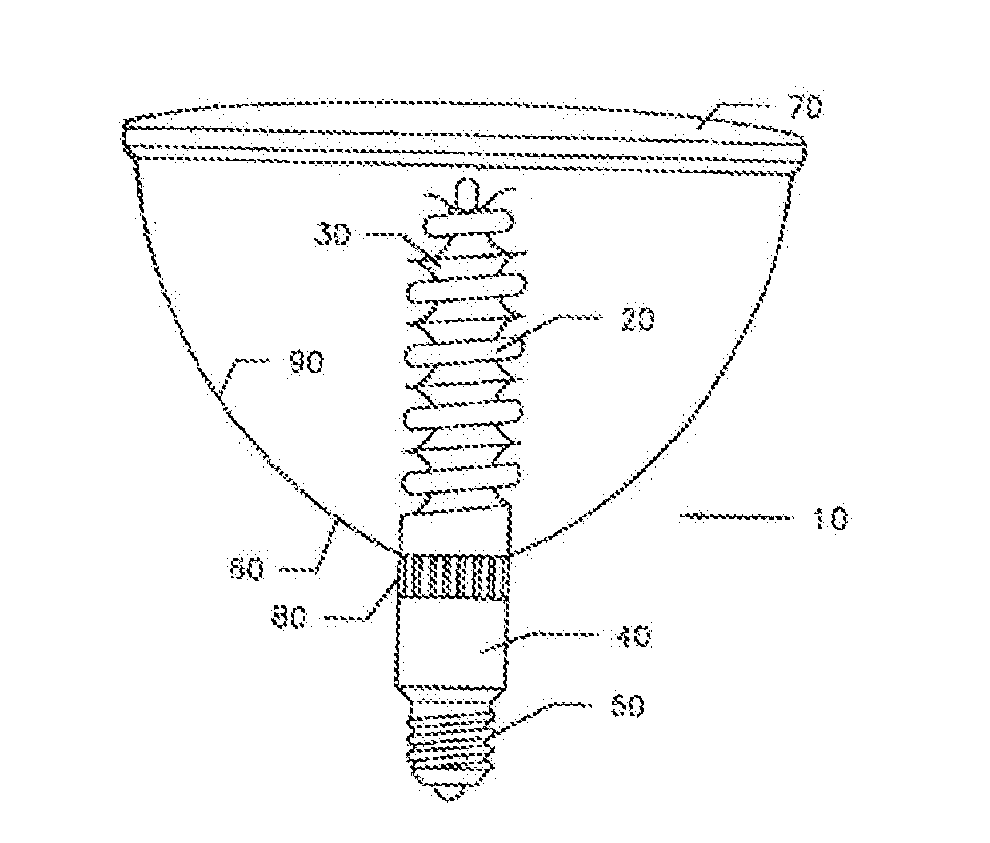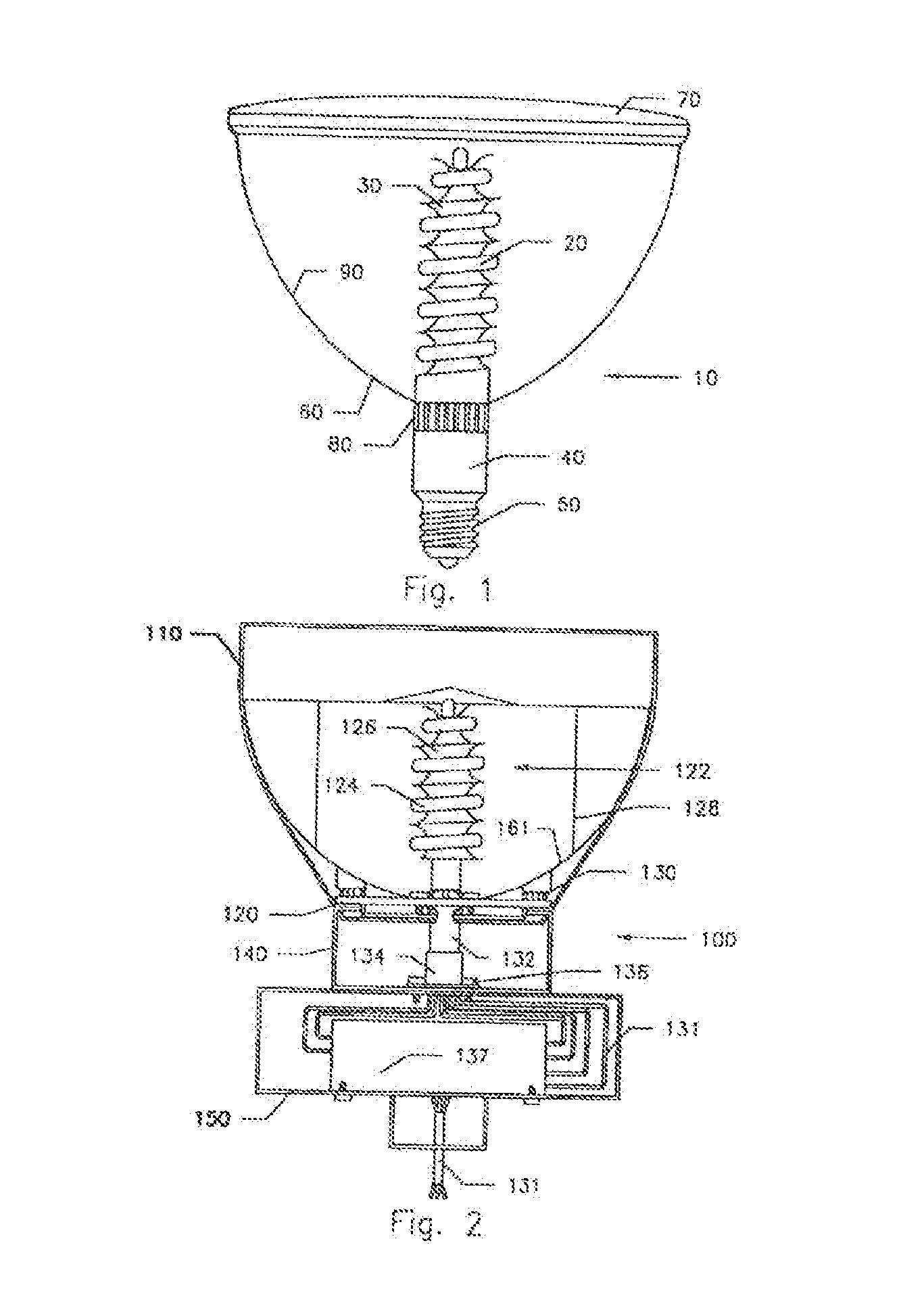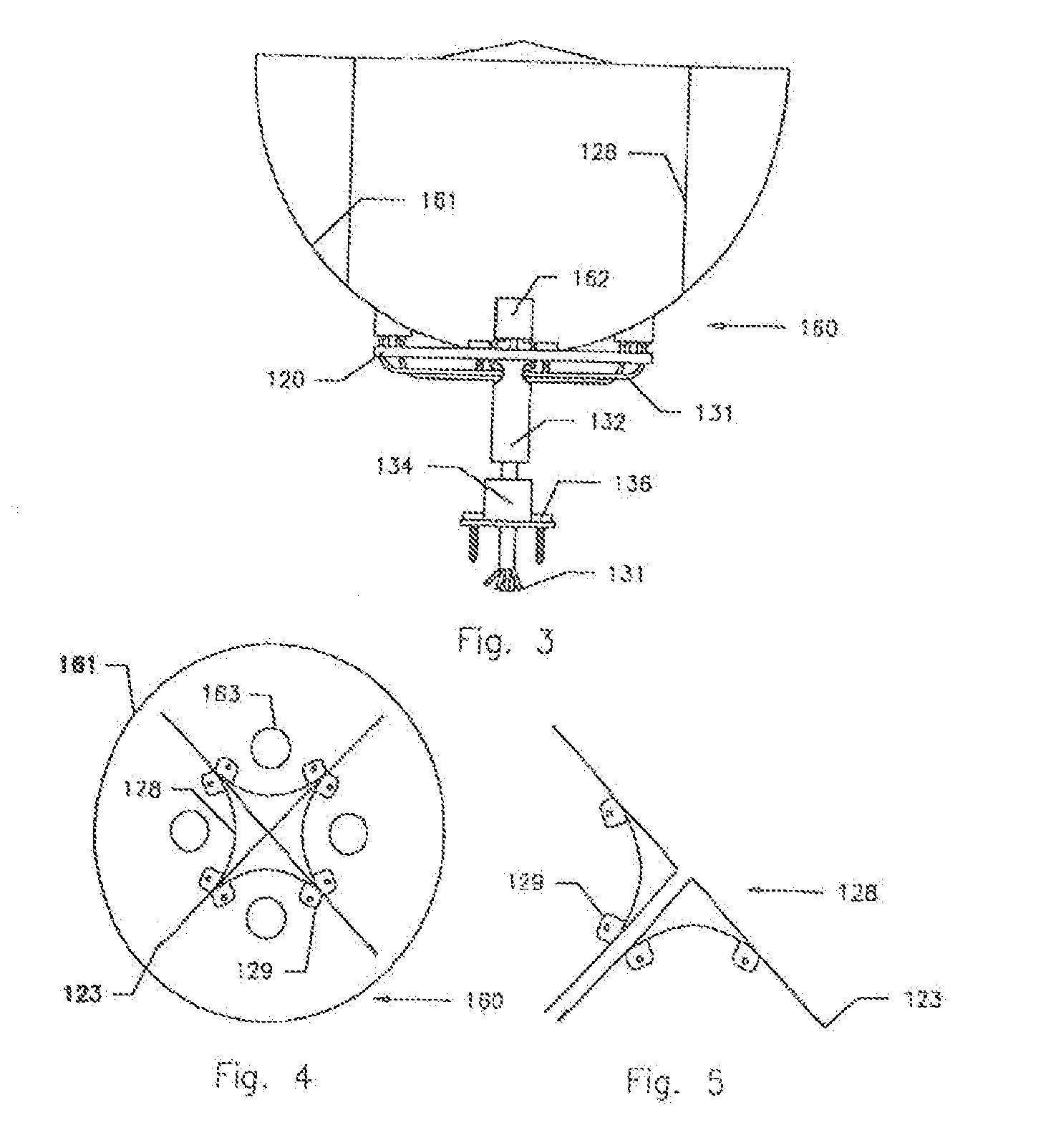Lighting systems including adapters electrically connecting lighting apparatuses
a technology of lighting apparatus and adapter, which is applied in the direction of lighting and heating apparatus, incadescent body mounting/support, narrow/point-like lamps, etc., can solve the problems of large area illumination burden of industrial and commercial buildings, associated amount of heat, and time periods with less than desired lighting coverage, so as to achieve less wattage consumption, less wattage consumption, and heat dissipation
- Summary
- Abstract
- Description
- Claims
- Application Information
AI Technical Summary
Benefits of technology
Problems solved by technology
Method used
Image
Examples
Embodiment Construction
[0122]As seen in FIG. 1, a flood light 10 comprises a spiral compact fluorescent lamp 20 around which a primary reflector 30 is positioned. A first bonding means, such as glue or other adhesive or mechanical means is employed to fix lamp 20 and primary reflector 30 in a predetermined position. Lamp 20 is constructed in accordance with typical fluorescent lamps, comprising phosphor coating applied to the inside of the tube with hot cathodes at each end of the lamp. Air is exhausted through the exhaust tube during manufacture and an inert gas is introduced into the bulb. A minute quantity of liquid mercury is included with gas, the gas is usually argon. The stem press has lead-in-wires connecting the base pins and carry the current to and from the cathodes and the mercury arc. Reflector 30 may be fashioned from a variety of materials including but not limited to chrome-plated glass, chrome-plated metal, polished or painted aluminum plate, painted glass, and painted plastic with a vari...
PUM
 Login to View More
Login to View More Abstract
Description
Claims
Application Information
 Login to View More
Login to View More - R&D
- Intellectual Property
- Life Sciences
- Materials
- Tech Scout
- Unparalleled Data Quality
- Higher Quality Content
- 60% Fewer Hallucinations
Browse by: Latest US Patents, China's latest patents, Technical Efficacy Thesaurus, Application Domain, Technology Topic, Popular Technical Reports.
© 2025 PatSnap. All rights reserved.Legal|Privacy policy|Modern Slavery Act Transparency Statement|Sitemap|About US| Contact US: help@patsnap.com



